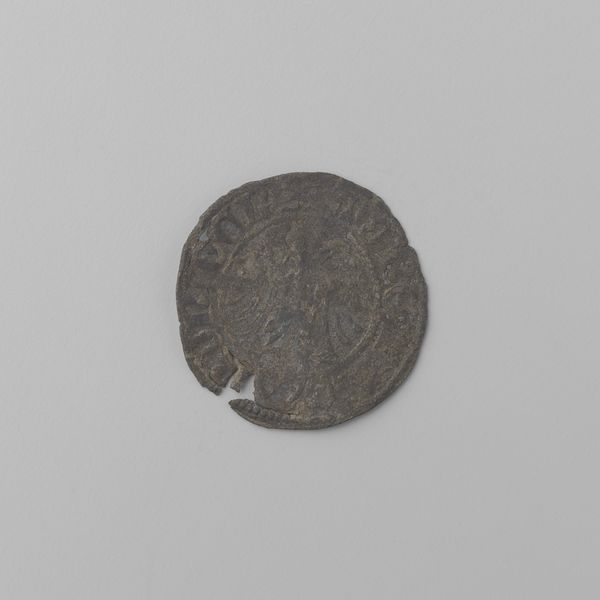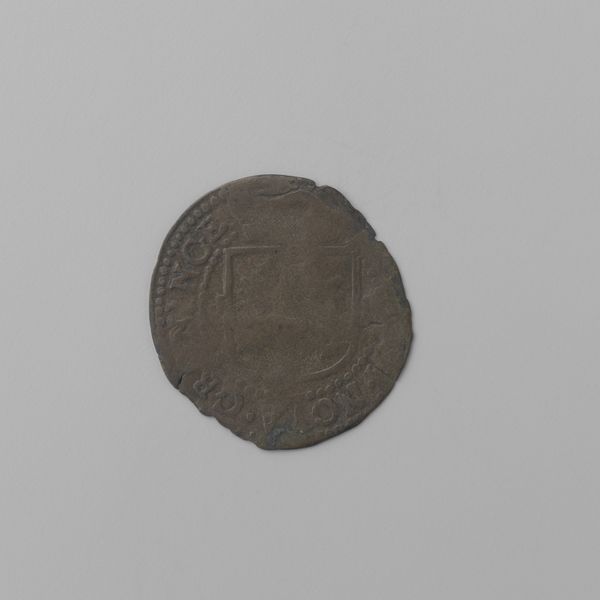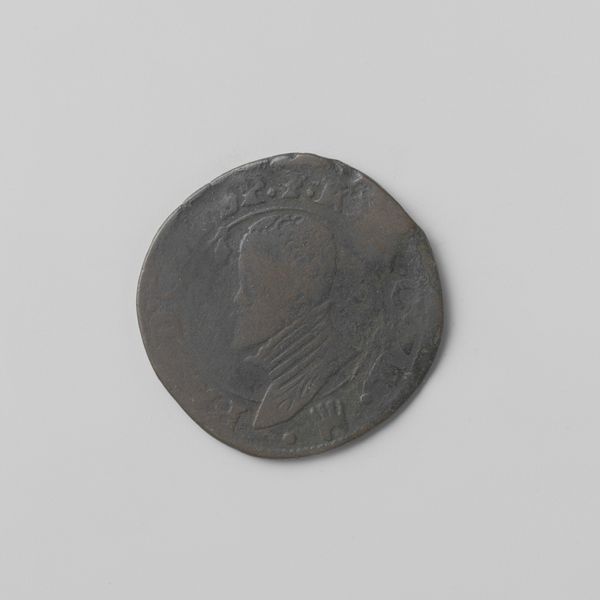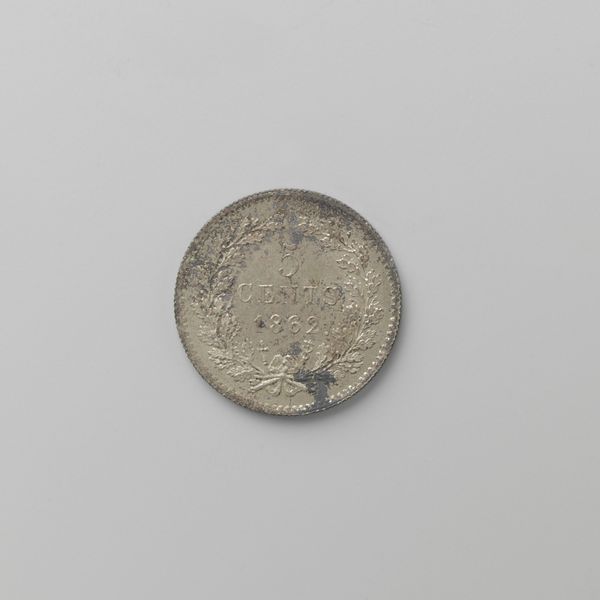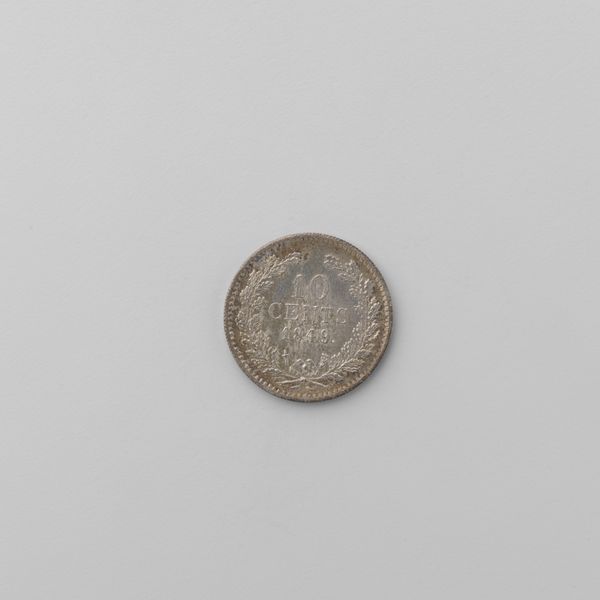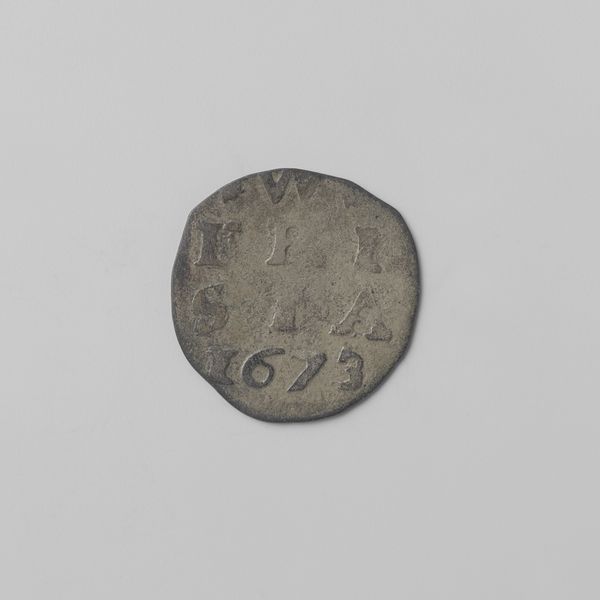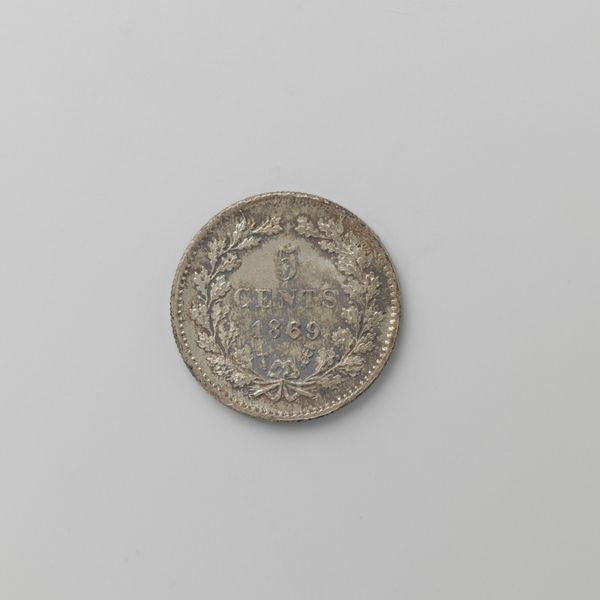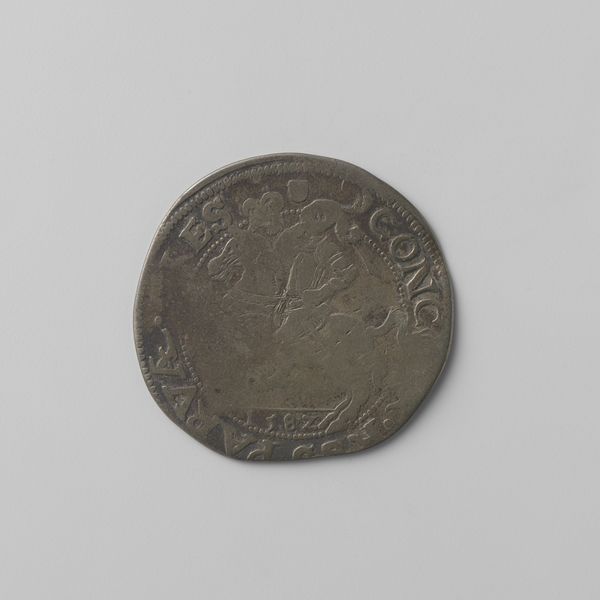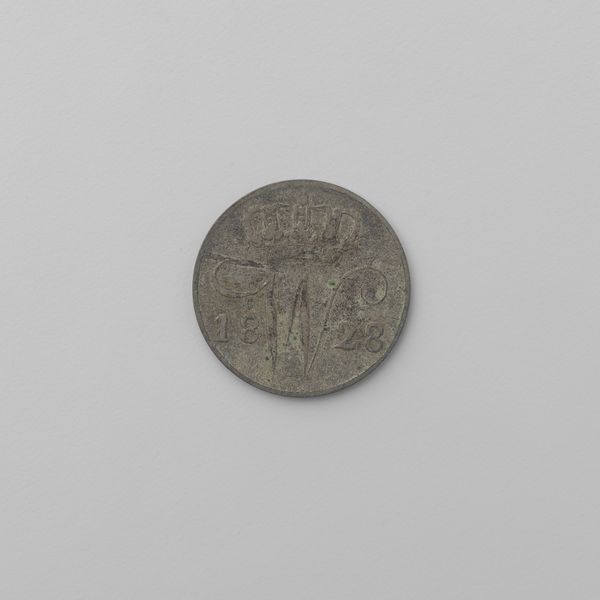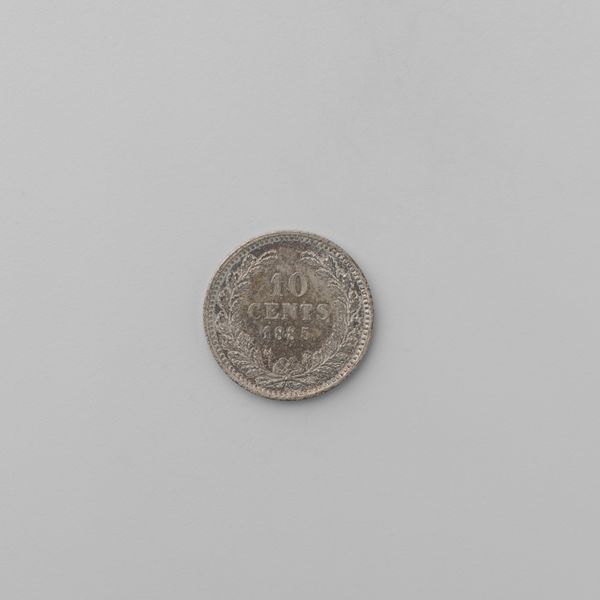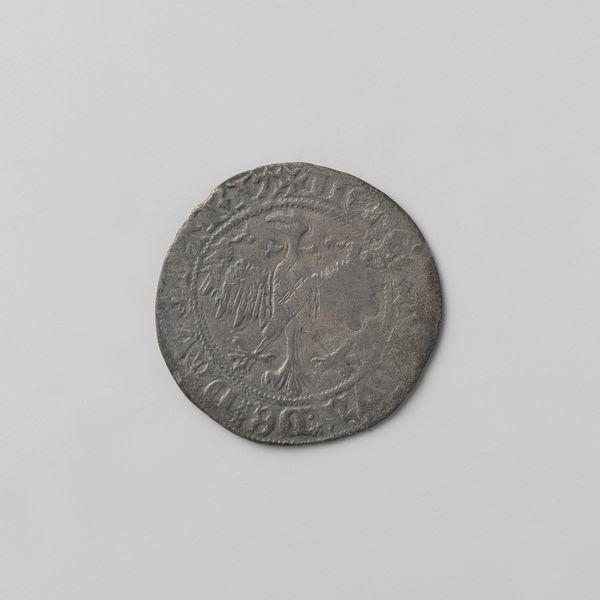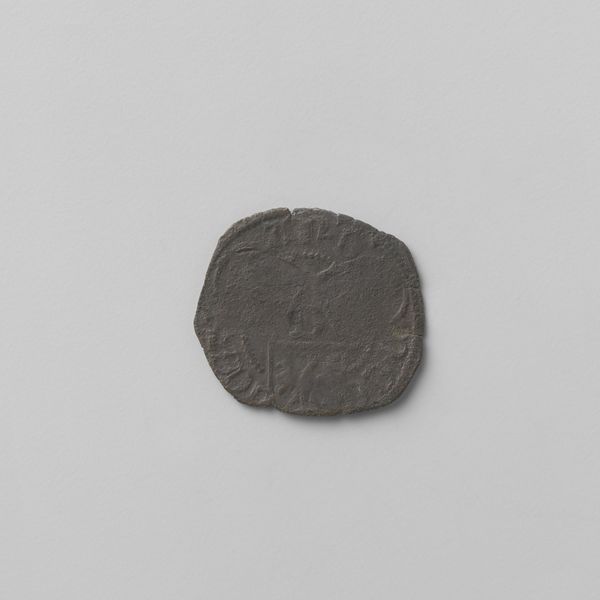
metal, photography
#
studio photography
#
product shot
#
clear graphic shape
#
3d printed part
#
rounded shape
#
metal
#
curved arc
#
photography
#
3d shape
#
metallic object render
#
product mock up
#
cutout
Dimensions: diameter 1.25 cm, weight 0.68 gr
Copyright: Rijks Museum: Open Domain
Curator: It’s remarkable how much history can be embedded in a tiny object, isn’t it? Here at the Rijksmuseum we have on display a Dutch 5 cent coin from 1859, during the reign of Willem III. Editor: There’s something immediately somber about it. The worn metal and simple design…it evokes a kind of muted, old-world dignity. Curator: Well, consider its composition! The material used, likely a humble bronze or copper-nickel alloy, speaks to mass production and wide circulation. These weren't meant to be precious objects, but everyday tools of exchange, greasy from pockets, a humble support of a growing and not equally shared capitalist economy. Editor: Exactly, not something romantic like a gilded frame, you see the potential for real circulation! I also like the laurel wreath framing the denomination. Curator: A classic symbol, of course. Often used to imply triumph, or civic virtue and stability! The coin attempts to project a specific type of power, an empire's firm hand on daily life, promising stability while the populace jostled and bartered with it. I wonder about the person who first held this particular coin. Editor: Someone perhaps dreaming of a loaf of bread? That’s what’s so fascinating, the implied narratives etched into its worn surface. Someone earned it, maybe building railways with all that cheap labour and then, boom, 5 cents clinked into their calloused palm, ready to exchange that toil for survival. That transaction has poetry. Curator: Absolutely. A tangible connection to a specific moment in Dutch economic history. Currency humanizes our relationship to the machine. Each coin with it’s potential of being used by a multitude of hands with each holder leaving residue from sweat or grim on its face until time passes, like the rings on a tree, etching marks of age into the metals surface, becoming an artifact of our social fabric! Editor: So well said. It reminds us that even the smallest, most unassuming objects carry a weight of history and human experience far beyond their monetary value. It’s like a portal through time you can keep in your pocket, reminding you that currency has a physical beginning. Curator: Precisely. Next time you fumble for change, think of the narratives those coins might tell. Editor: Absolutely. And appreciate the often invisible labor and lives intertwined within something so ordinary.
Comments
No comments
Be the first to comment and join the conversation on the ultimate creative platform.
